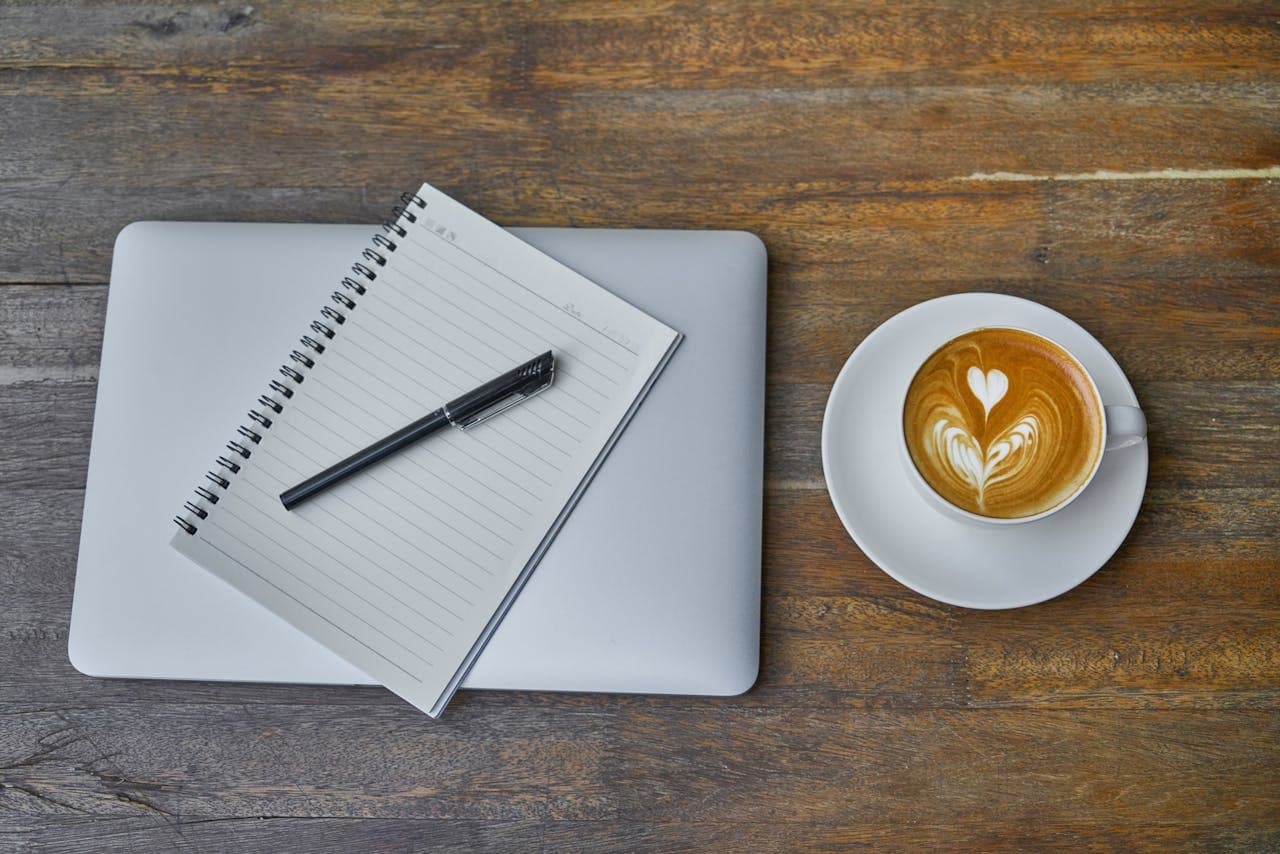Blog
Learning Materials
MLA Citation Format in Essays (2025 Guide)

Tilen
Updated: May 14, 2025

The world of academic writing can be daunting, especially when it comes to citations. Did you know that properly formatted citations can enhance your grades by up to 20 percent? But here's the kicker: many students overlook this vital skill. The truth is, understanding citation formats like MLA can set you apart from your peers. Mastering these rules might seem like just another task, but it opens the door to clearer communication and greater credibility in your work.
Table of Contents
- Mla In-Text Citations ExplainedBasic Principles Of Mla In-Text CitationsNavigating Complex Citation ScenariosElectronic And Non-Traditional Sources
- Creating Your Mla Works Cited PageEssential Formatting RequirementsCore Elements Of Citation EntriesHandling Different Types Of Sources
- Citing Different Source Types In MlaPrint And Traditional SourcesDigital And Online SourcesSpecialized And Complex Sources
- Formatting Your Essay With MlaPage And Document SetupTypography And Paragraph FormattingTitle Page And Document Structure
Quick Summary
| Takeaway | Explanation |
|---|---|
| MLA In-Text Citations Use Author-Page Method | When citing, include the author's last name and the page number(s) to guide readers to the source in the Works Cited page, ensuring clarity and academic integrity. |
| Core Elements for Works Cited Entries | Each citation entry should include nine core elements, such as the author's name, title of the source, publisher, and publication date to provide complete information for readers. |
| Adapt Citations for Digital and Non-Traditional Sources | When citing digital sources, include URLs and access dates, and use alternative locators like paragraph numbers when page numbers are unavailable, addressing the unique nature of online content. |
| Consistent Formatting is Key | Maintain one-inch margins, use Times New Roman 12-point font, and double-space your document to adhere to MLA formatting guidelines throughout your essay. |
| Use a Hanging Indent in Works Cited | Format citation entries with a hanging indent where the first line is flush left, and subsequent lines are indented 0.5 inches for clarity and professionalism. |
MLA In-Text Citations Explained
MLA in-text citations are a critical component of academic writing, providing a clear and consistent method for acknowledging sources within your essay. These citations help readers trace the origin of your information and give proper credit to the original authors. Understanding the nuanced rules of MLA citation format ensures academic integrity and demonstrates scholarly research skills.
Basic Principles of MLA In-Text Citations
The core of MLA in-text citation is the author-page method, which requires minimal interruption to the reader's flow while providing essential source information. When you quote or paraphrase from a source, you'll include the author's last name and the specific page number(s) from which the information originates. This approach allows readers to easily locate the original source in your Works Cited page.
For example, a typical in-text citation might look like this: "Academic research suggests that critical thinking skills are essential for student success" (Smith 45). The parenthetical citation provides the author's last name and the page number, creating a direct link between your text and the source.
Navigating Complex Citation Scenarios
MLA citation format becomes more nuanced when dealing with different types of sources. For sources with multiple authors, the citation rules vary slightly:
- Single Author: Use the author's last name and page number (Smith 42)
- Two Authors: Include both last names (Smith and Jones 56)
- Three or More Authors: Use the first author's last name followed by "et al." (Smith et al. 73)
When dealing with sources without a clear author, such as website articles or anonymous publications, you'll need to use a shortened version of the title. According to the Purdue Online Writing Lab, you should use the first few words of the title in quotation marks or italics, depending on the source type.
Electronic and Non-Traditional Sources
Modern research often involves digital sources that require special citation considerations. For electronic sources without page numbers, MLA recommends using alternative locators like paragraph numbers, section headings, or chapter numbers. If no clear locator exists, you can simply use the author's name in the parenthetical citation.
Digital sources like websites, social media posts, and online articles require careful attention to detail. Columbia College's Citation Guide emphasizes the importance of providing enough information for readers to locate the original source easily.
Mastering MLA in-text citations might seem challenging at first, but with practice, it becomes second nature. The key is to be consistent, accurate, and transparent about your sources. By following these guidelines, you'll not only avoid potential plagiarism but also demonstrate your academic rigor and respect for intellectual property.
Creating Your MLA Works Cited Page
The Works Cited page represents the culmination of your academic research, serving as a comprehensive record of all sources referenced in your essay. This critical component not only validates your research but also provides readers with a roadmap to explore the original sources that informed your work.
Essential Formatting Requirements
Creating an MLA Works Cited page requires precision and attention to detail. Purdue Online Writing Lab recommends specific formatting guidelines that must be meticulously followed. The page should begin on a separate page at the end of your document, with the title "Works Cited" centered at the top of the page. Maintain one-inch margins on all sides and use a readable font like Times New Roman, sized at 12 points.
Entries must be formatted with a hanging indent, where the first line starts at the left margin and subsequent lines are indented 0.5 inches. This creates a clean, professional appearance that makes each citation easily distinguishable. Entries should be double-spaced and organized alphabetically by the author's last name or the first significant word of the title if no author is present.
Core Elements of Citation Entries
According to Columbia College's Citation Guide, MLA works cited entries follow a standardized structure comprising nine core elements:
- Author's Name: Last name first, followed by first name
- Title of Source: Italicized for books, in quotation marks for articles
- Title of Container: The larger work containing the source
- Other Contributors: Editors, translators, directors
- Version: Edition or volume number
- Number: Issue or volume specifics
- Publisher: Organization responsible for producing the source
- Publication Date: Year of publication
- Location: Page numbers, URL, DOI, or physical location
Not all elements will be present in every citation, and some may be omitted if the information is unavailable. The key is to provide enough detail for readers to locate the original source.
Handling Different Types of Sources
MLA citation format accommodates a wide range of sources, from traditional print materials to digital and multimedia resources. Modern Language Association Style Center provides comprehensive guidance for citing various source types.
For print books, include the author's name, book title in italics, publisher, and publication year. Digital sources like websites require additional information such as the date of publication, date of access, and URL. Academic journal articles need specific details including volume and issue numbers, while social media posts and online content have their own unique citation protocols.
Pro tip: Utilize citation management tools and online citation generators to help streamline the process, but always double-check the generated citations for accuracy. While these tools are helpful, they aren't infallible, and manual review ensures your Works Cited page meets MLA's rigorous standards.
 Mastering the MLA Works Cited page is an essential skill for academic writing. It demonstrates your scholarly rigor, gives proper credit to original sources, and provides a professional framework for your research documentation.
Mastering the MLA Works Cited page is an essential skill for academic writing. It demonstrates your scholarly rigor, gives proper credit to original sources, and provides a professional framework for your research documentation.
Citing Different Source Types in MLA
Navigating the complex landscape of source citations requires understanding the nuanced MLA guidelines for different types of sources. Each source type—from traditional print materials to digital platforms—demands specific citation approaches that maintain academic integrity and provide clear attribution.
Print and Traditional Sources
Traditional print sources like books, academic journals, and newspapers follow a structured citation format. Columbia College's Citation Guide recommends focusing on the nine core elements: author, title, container, contributors, version, number, publisher, publication date, and location.
For a book, the basic citation includes the author's last name, book title in italics, publisher, and publication year. A scholarly journal article requires additional details like volume number, issue number, and page range. Academic publications often have more complex citation requirements that demand careful attention to specific formatting rules.
Digital and Online Sources
Digital sources introduce unique challenges in MLA citation. Modern Language Association Style Center emphasizes the importance of capturing digital-specific information like URLs, DOIs, and access dates. Websites, social media posts, online articles, and electronic books each require tailored citation approaches.
For website citations, include the author's name (if available), webpage title in quotation marks, website name in italics, publication or update date, and the URL. When citing social media posts, capture the author's username, the text of the post, platform name, and the date of publication. Electronic books follow similar principles to print books, with the addition of the digital platform or e-reader information.
Specialized and Complex Sources
Some sources require extra consideration in MLA formatting. Government reports, for instance, often list the organization as the author. BibGuru's Citation Guide suggests that when an organization is both author and publisher, the citation should begin with the title, followed by any report number, publisher, and publication year.
Multimedia sources like films, podcasts, and interviews have their own citation protocols. A film citation typically includes the title (in italics), director, primary performers, production company, and year. Podcast citations need the episode title, podcast name, host, production company, and release date.
Pro tip: While online citation generators can help, always manually verify the accuracy of your citations. Each source type has unique nuances that automated tools might miss. Consistency, precision, and attention to detail are key to creating a professional and credible Works Cited page.
Mastering MLA citations across different source types demonstrates not just technical skill, but a deep respect for intellectual property and academic communication. By understanding these guidelines, you'll effectively acknowledge the diverse sources that inform your research and contribute to scholarly discourse.
Formatting Your Essay with MLA
MLA formatting represents more than just aesthetic guidelines; it's a standardized approach that ensures academic documents maintain professional consistency and readability. Understanding these precise formatting requirements is crucial for students and researchers seeking to present their work effectively.
Page and Document Setup
Purdue Online Writing Lab provides comprehensive guidance on MLA document formatting. Begin with one-inch margins on all sides of your document, using a standard, readable font like Times New Roman in 12-point size. Double-spacing is mandatory throughout the entire document, creating a clean and professional appearance.
The first page requires a specific header containing your full name, instructor's name, course title, and submission date, aligned to the top left corner. Each subsequent page should include your last name and page number in the top right corner. This header helps track document ownership and maintains academic accountability.
Typography and Paragraph Formatting
Paragraph formatting in MLA style demands precision. Each new paragraph should be indented 0.5 inches from the left margin, creating a clear visual separation between text blocks. Scribbr's MLA Guide emphasizes the importance of consistent indentation to distinguish paragraph boundaries.
Capitalization follows specific rules: titles should use title case, where major words are capitalized, while the essay's main title remains centered. Avoid bold or colored text unless absolutely necessary for academic purposes. Headings, if used, should be simple and aligned to the left margin.
Title Page and Document Structure
The title page in MLA format is straightforward yet structured. York Catholic Research Manual recommends a centered title that accurately reflects your essay's content. The title should be neither boldfaced nor italicized, and it must not be underlined.
Your document should follow a logical progression: a clean title page, the main essay body with proper citations, and concluding with a separate Works Cited page. The Works Cited page begins on a new page, continues the double-spacing and one-inch margin requirements, and lists all sources alphabetically.
 Pro tip: Before submitting your document, conduct a meticulous review to ensure every formatting detail aligns with MLA guidelines. Consider using the official MLA handbook or trusted online resources as reference points. While formatting might seem technical, it communicates your attention to detail and academic professionalism.
Pro tip: Before submitting your document, conduct a meticulous review to ensure every formatting detail aligns with MLA guidelines. Consider using the official MLA handbook or trusted online resources as reference points. While formatting might seem technical, it communicates your attention to detail and academic professionalism.
MLA formatting is more than a set of rules—it's a communication standard that demonstrates scholarly discipline. By mastering these guidelines, you showcase not just your writing skills, but your commitment to clear, professional academic communication.
Frequently Asked Questions
What is the MLA citation format?
The MLA citation format is a standardized style for citing sources in academic writing, primarily used in the humanities. It emphasizes providing relevant details to readers about the source's authorship, title, publication, and location so they can locate the original work.
How do I create MLA in-text citations?
In MLA format, in-text citations use the author-page method. Include the author's last name and the page number of the source in parentheses. For example, (Smith 45) directs readers to the corresponding entry in the Works Cited page.
What should be included in an MLA Works Cited page?
An MLA Works Cited page should list all sources referenced in your essay, formatted with a hanging indent. Each entry typically includes the author's name, title of the source, title of the container, publisher, publication date, and location (like page numbers or URLs).
How do I format my essay using MLA style?
To format your essay in MLA style, use one-inch margins on all sides, double-space your text, and use a readable font like Times New Roman in 12-point size. Include a header with your last name and page number on each page and organize your content starting with a title page, followed by the main text and a Works Cited page.
Elevate Your Academic Writing with Samwell.ai
Feeling overwhelmed by the complexities of MLA citation formatting? You’re not alone. Many students face the daunting task of mastering citation rules, ensuring clarity, and maintaining academic integrity—all while juggling multiple assignments. The struggle to delineate between source types and format your Works Cited page accurately is a challenge that can hinder your academic performance, but it doesn’t have to be!

With Samwell.ai, you can tackle these challenges head-on. Our AI-driven platform is designed to simplify your writing process, guiding you through citation requirements effortlessly. Here’s how we can help:
- Generate precise, formatted citations instantly, reducing the risk of plagiarism.
- Access our Power Editor for targeted editing and expansion of content, ensuring your essay meets all academic standards.
- Utilize Guided Essays to create structured outlines that incorporate MLA formatting basics seamlessly.
Don’t let citation confusion hold you back! Visit https://samwell.ai today and discover how we can enhance your academic writing while ensuring originality and compliance. Start mastering your essays now—your grades will thank you!
Generate essays with Samwell.ai
Whether you’re a publisher, professor, journalist, or student, let us tailor a plan just for you.Most Read Articles

Your Guide to Help Writing a Essay Successfully
Expert tips for help writing a essay - from crafting a thesis to structuring your essay effectively.
Tilen

How to Write Critical Thinking Essay: Expert Tips
Expert tips for writing a critical thinking essay. Learn how to structure, choose topics, and use evidence effectively.'
Tilen

How to Write a Good Hook: A Step-by-Step Guide
Master the art of crafting a good hook with our guide. Create compelling openers for a memorable first impression.
Tilen
